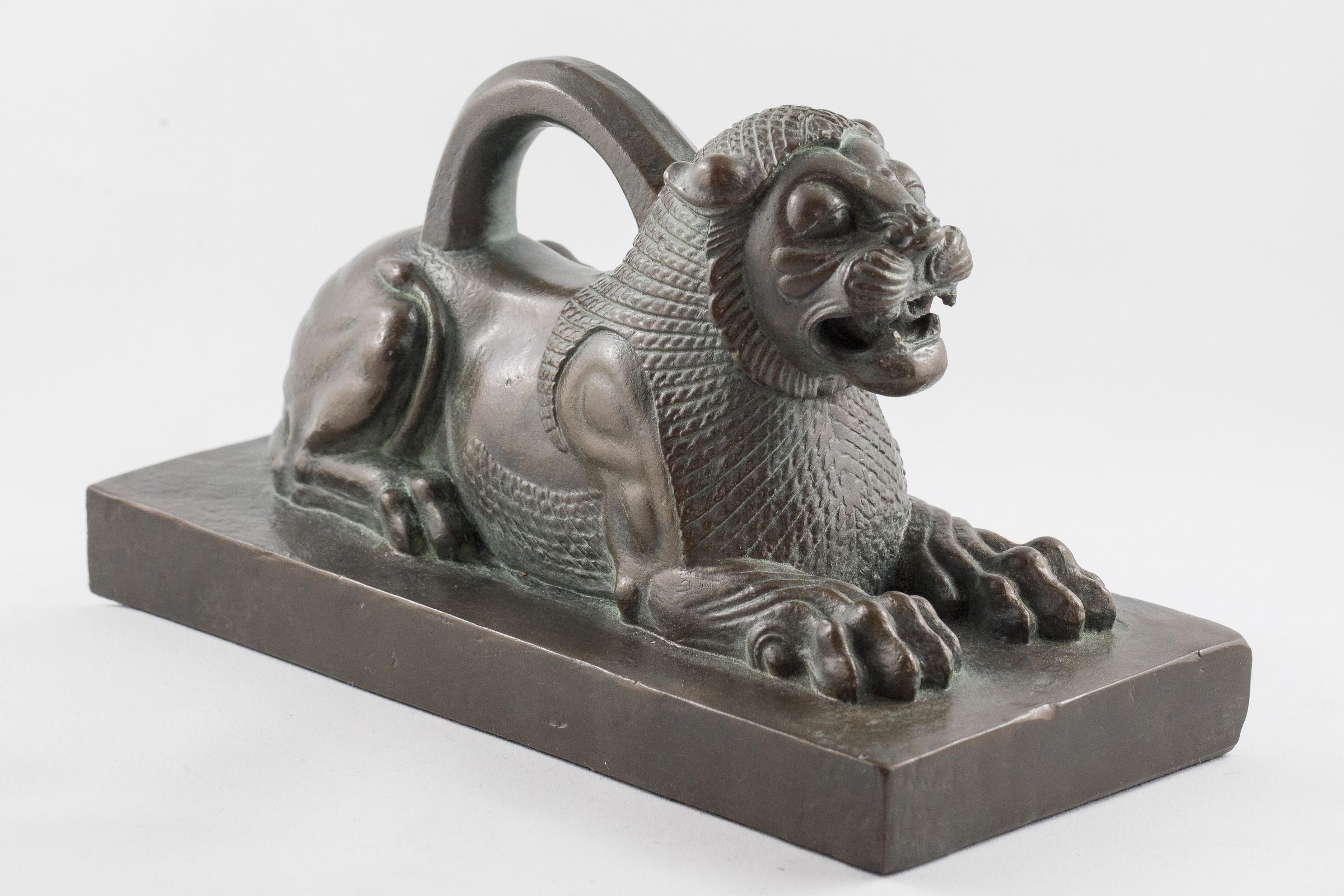Bronze Lion
Name/Title
Bronze LionEntry/Object ID
06NE12107Description
A reduced scale of lion lying down with its head held up, mouth open. A handle is attached to the back of the neck to its back near its feet.Type of Sculpture
StatuetteArtwork Details
Medium
ResinContext
Prior to the invention of coinage, commerce involved the exchange of materials like metal scraps or ingots. Over time, several cultures of the ancient Near East began to utilize standardized metal weights. Weights, such as this bronze lion, were set on one side of a scale while the material for trade was placed on the other. The ring attached on the back of the lion allowed financiers to easily life the weight on and off the measuring scale. The original of the bronze lion was made on the occasion of the festival of Persepolis, and weighs 121 kg (267 lbs), which is equivalent to 4 talents worth of value in ancient Persia. A weight of such mass was used for large scale transactions. The Neo-Assyrian tradition of casting weights in the shape of a resting lion began during the eighth-century BCE and became popular in Achaemenid culture by modelling earlier Assyrian types. Weights such as this were often made in an image that symbolized a culture's identity. A lion was a fitting symbol for the strength and power of the Persians.Made/Created
Date made
499 BCE - 400 BCETime Period
ArchaicEthnography
Culture/Tribe
Near Eastern - Persian

